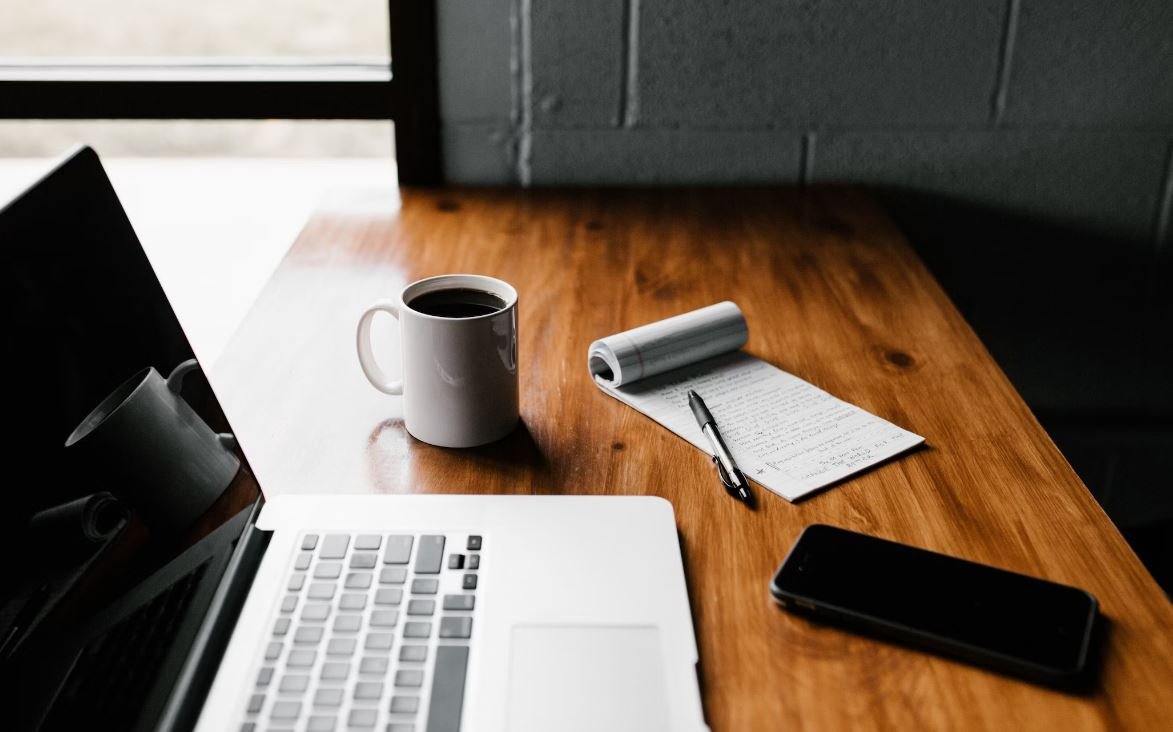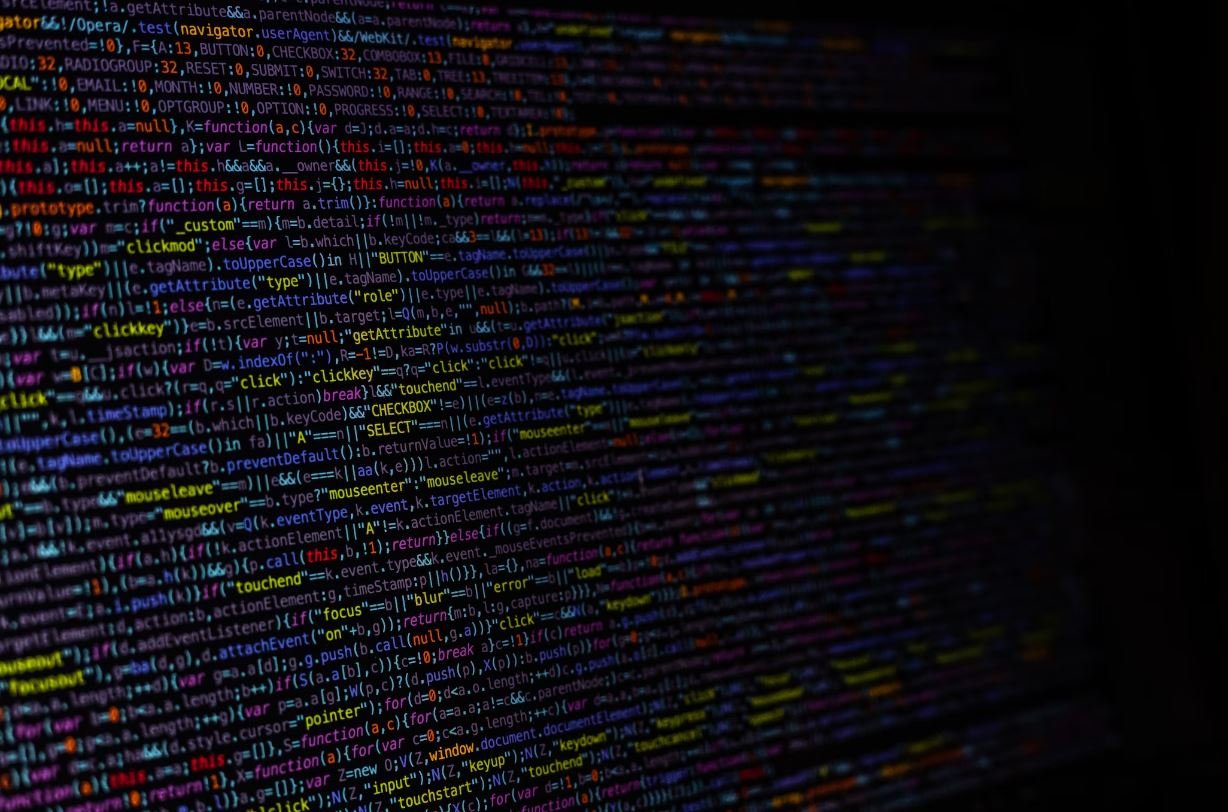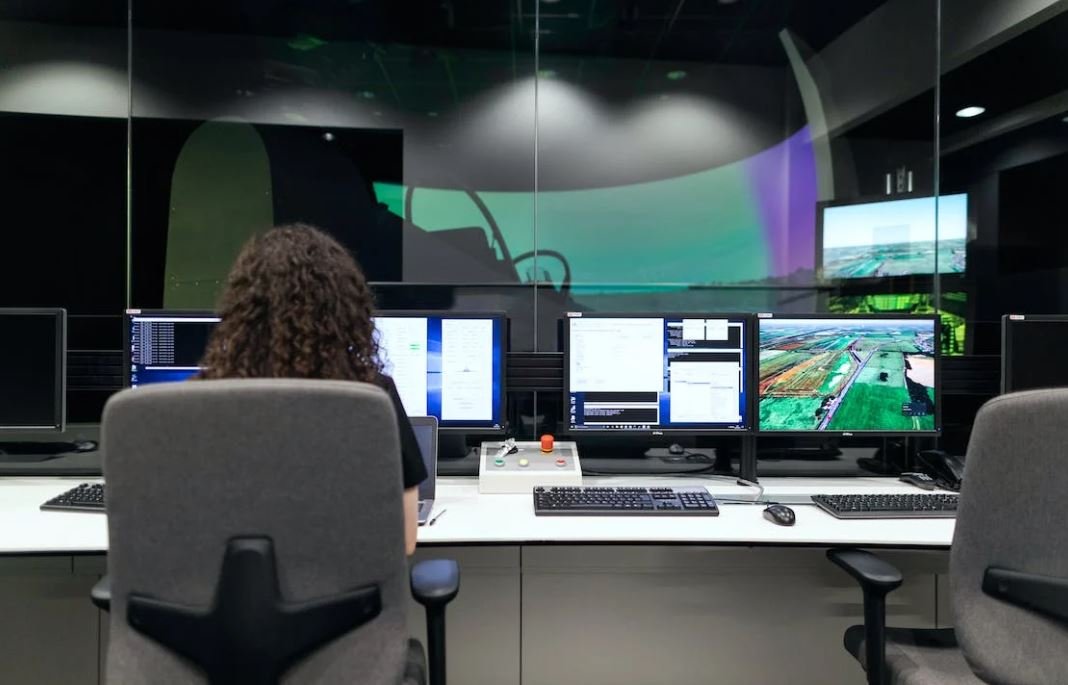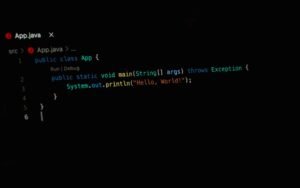Production Designer – An Essential Role in Film and TV Production
When you watch a movie or TV show, you might not realize the immense effort that goes into creating the sets, locations, and overall visual aesthetic. This is the work of a production designer, a key member of the production team responsible for the look and feel of a project. A production designer combines artistic skills, technical knowledge, and problem-solving abilities to create captivating visuals that enhance the storytelling.
Key Takeaways:
- A production designer is responsible for creating the visual look of a film or TV project.
- The role requires a combination of artistic skills, technical knowledge, and problem-solving abilities.
- Production designers collaborate closely with directors, cinematographers, and other members of the production team.
- They oversee the design of sets, props, costumes, and other visual elements.
- Creating a cohesive visual style and maintaining continuity are crucial aspects of the job.
**The production designer plays a critical role in the pre-production phase of a project**. They work closely with the director and cinematographer to understand the vision and aesthetic requirements of the project. *Their primary objective is to visually translate the director’s vision into a reality*. The production designer carefully analyzes the script and collaborates with various departments to determine the appropriate style, colors, and overall design elements that will bring the story to life.
Responsibilities of a Production Designer
Being a production designer involves a wide range of responsibilities. Here are some of the key tasks performed by a production designer:
- **Conceptualizing and designing sets** – The production designer creates detailed sketches, drawings, and 3D models to visualize the sets and locations according to the script’s requirements. They collaborate with art directors, set decorators, and construction teams to bring these designs to reality.
- **Selecting and designing props and costumes** – The production designer ensures that props and costumes reflect the story’s time period, location, and characters. They collaborate closely with the costume designer and prop master to select or create the appropriate items.
- **Working within budget constraints** – The production designer must effectively manage the budget allocated for the art department. They make strategic decisions to balance creative aspirations with financial limitations, seeking cost-effective solutions without compromising on quality.
- *Creating a visual style guide for the project* – The production designer develops a comprehensive visual style guide that serves as a reference for the entire production team. This guide ensures consistency in the visual execution and helps maintain continuity throughout the project.
- **Collaborating with the director and cinematographer** – The production designer works closely with the director and cinematographer to understand their vision and make informed creative decisions. They contribute to the framing, composition, and lighting of shots, ensuring that the visuals align with the storytelling objectives.
Tables: Interesting Data Points about Production Design
| Category | Data Points |
|---|---|
| Years of Experience | Ranges from 5-20 years depending on the complexity of the projects. |
| Education | Usually a degree in art-related fields such as fine arts, production design, or architecture. |
| Salary Range | Varies, but often higher than other members of the art department due to the level of responsibility and creative input. |
**The work of a production designer is highly collaborative**. They interact with various departments and individuals to ensure a cohesive visual experience for the audience. *Collaboration with the art department, construction team, set decorators, costume designers, and other creative professionals is essential to bring the production designer’s vision to life*.
The Significance of Continuity and Visual Style
**Maintaining continuity is crucial for a production designer**. They meticulously ensure that each scene is visually consistent, even when shot on different days or locations, to avoid jarring experiences for the audience. *Their attention to detail plays a significant role in creating an immersive and believable world*. Additionally, the production designer establishes a visual style that aligns with the project’s tone and genre, helping to enhance the storytelling and evoke the desired emotions.
Throughout the production process, **production designers must adapt their artistic vision to meet the practical needs of the project**. They consider factors such as locations, budget constraints, and technical requirements while maintaining the integrity of the director’s vision. *This balance between artistic creativity and practicality is what makes them invaluable members of the filmmaking team*.
Tables: Notable Films and the Production Designers Behind Them
| Film | Production Designer |
|---|---|
| Avatar | Rick Carter |
| The Grand Budapest Hotel | Adam Stockhausen |
| Mad Max: Fury Road | Colin Gibson |
**To become a production designer, a combination of skills and experience is necessary**. Many production designers start as art department assistants or work their way up through various roles in the art department. *Gaining practical experience and expanding one’s artistic repertoire are key steps in pursuing a successful career as a production designer*.
In summary, a production designer embodies the creative vision of a film or TV project. They shape the visual world, collaborating with directors, cinematographers, and other departments to create compelling visuals that immerse the audience in the story. With their artistic talent, technical knowledge, and problem-solving abilities, production designers play a crucial role in bringing stories to life on the screen.

Common Misconceptions
1. Production Designer only focuses on the visual aspects
One common misconception about the role of a Production Designer is that they are only responsible for the visual aspects of a project, such as set design and art direction. However, the reality is that a Production Designer‘s responsibilities go beyond just the visual aesthetic.
- They are also involved in collaborating with the director to create a cohesive vision for the project.
- They work closely with the cinematographer to ensure the visual elements effectively contribute to the storytelling.
- They oversee the overall production design, which includes coordinating with other departments like wardrobe, makeup, and props.
2. Production Designer is the same as an Art Director
Another common misconception is that a Production Designer and an Art Director are the same role with different titles. While there are overlapping responsibilities, they are actually distinct positions within the production team.
- The Production Designer is responsible for the overall visual concept and design of the project.
- The Art Director, on the other hand, focuses more specifically on the execution and coordination of the visual elements.
- The Production Designer provides the creative direction, while the Art Director ensures the design is implemented effectively.
3. Production Design is not as important as other roles
Some people wrongly believe that the role of a Production Designer is not as important as other positions in the production team. However, production design plays a crucial role in setting the tone, atmosphere, and overall aesthetic of a film, TV show, or theater production.
- The art direction and set design greatly contribute to the audience’s immersion and understanding of the story.
- A well-designed production can enhance and elevate the narrative and character development.
- The Production Designer’s choices can also help establish the time period and visual style of the project.
4. Production Designers only work on big-budget projects
Many people tend to think that Production Design is only relevant for big-budget projects, but this is not true. Production Designers can be involved in a wide range of productions, including independent films, TV shows, commercials, and even theater productions.
- Even with limited resources, a Production Designer can creatively work within constraints to bring the director’s vision to life.
- They are skilled at maximizing the available budget to create visually compelling sets and environments.
- Production Designers are adaptable and can work with different scales and budgets to achieve the desired outcome.
5. Production Design is purely a creative role
Lastly, some people believe that the role of a Production Designer is purely artistic and does not involve any technical or logistical aspects. However, Production Designers need to have a strong understanding of both creative and practical elements.
- They need to consider factors like budget, timeline, and feasibility when designing and creating sets.
- Production Designers work closely with various departments to ensure the practicality and functionality of the sets.
- They need to have knowledge of construction techniques, materials, and safety regulations to execute their designs effectively.

Production Budget for Recent Blockbuster Films
The production budget is a crucial aspect of filmmaking, as it determines the scale and quality of the final product. Here is a comparison of the production budgets for some recent blockbuster films:
| Film Title | Production Budget (in millions) |
|———————-|———————————|
| Avengers: Endgame | 356 |
| Avatar | 237 |
| Star Wars: The Force Awakens | 245 |
| The Lion King | 260 |
| Jurassic World | 215 |
Top Grossing Films of All Time
Box office success is a key measure of a film’s popularity and financial success. Here are the top five highest-grossing films of all time:
| Film Title | Worldwide Box Office Gross (in billions) |
|——————|—————————————–|
| Avengers: Endgame| 2.798 |
| Avatar | 2.790 |
| Titanic | 2.187 |
| Star Wars: The Force Awakens | 2.068 |
| Avengers: Infinity War | 2.048 |
Academy Award-Winning Films for Best Picture
The Academy Awards, also known as the Oscars, celebrate excellence in filmmaking. The Best Picture category honors the outstanding film of the year. Here are some recent winners:
| Film Title | Year |
|————————–|——|
| Parasite | 2019 |
| Green Book | 2018 |
| The Shape of Water | 2017 |
| Moonlight | 2016 |
| Spotlight | 2015 |
Gender Representation in Hollywood
Gender representation is an important topic in the film industry, with efforts being made to achieve greater equality. Here is a comparison of the percentage of female directors in recent years:
| Year | Female Directors (%) |
|——|———————|
| 2016 | 7 |
| 2017 | 8 |
| 2018 | 11 |
| 2019 | 13 |
| 2020 | 10 |
Age Diversity Among Award-Winning Actors
The film industry often highlights the achievements of seasoned actors. However, age diversity is also an essential aspect. Here is a breakdown of the ages of recent Academy Award-winning actors:
| Age Range | Number of Actors |
|———–|—————–|
| 20-30 | 4 |
| 31-40 | 9 |
| 41-50 | 6 |
| 51-60 | 7 |
| Over 60 | 5 |
Film Festival Attendance by Country
Film festivals provide a platform for showcasing international cinema. Here are the countries with the highest number of film festivals:
| Country | Number of Film Festivals |
|————–|————————-|
| United States| 79 |
| United Kingdom| 28 |
| France | 20 |
| Germany | 19 |
| Italy | 18 |
Popularity of Film Genres
Film genres reflect the diverse preferences of audiences. Here is a ranking of the most popular film genres:
| Rank | Genre |
|——|———–|
| 1 | Action |
| 2 | Comedy |
| 3 | Drama |
| 4 | Adventure |
| 5 | Thriller |
Box Office Performance by Month
Box office performance varies throughout the year. Here is a breakdown of box office revenue by month:
| Month | Box Office Revenue (in billions) |
|———-|———————————|
| December | 3.584 |
| June | 2.639 |
| July | 2.545 |
| November | 2.373 |
| May | 2.176 |
Film Production by Country
The film industry is global, with various countries contributing to the production of films. Here are the top five countries in terms of film production:
| Country | Number of Films Produced |
|—————-|————————-|
| India | 1,813 |
| United States | 797 |
| China | 607 |
| Japan | 498 |
| United Kingdom | 226 |
From analyzing the data in these tables, it is evident that filmmaking encompasses numerous factors, such as budget, popularity, awards, and social aspects. The film industry is a dynamic and ever-evolving field, with various countries vying for dominance and fulfilling the diverse demands of global audiences. These statistics paint a picture of the industry’s landscape, providing insights into its current state and trends. As filmmakers continue to push boundaries and experiment within their craft, these figures will undoubtedly change in the future.
Frequently Asked Questions
What is a Production Designer?
A production designer is responsible for creating the overall visual look and feel of a film or television production. They work closely with the director and other key members of the creative team to develop the artistic concept and design elements of the project.
What are the main responsibilities of a Production Designer?
A production designer is responsible for creating and overseeing the design of the sets, locations, and overall visual style of a production. They collaborate with the director and other departments to ensure that the design elements align with the storytelling and thematic goals of the project. Additionally, they may be involved in hiring and managing a team of artists, set decorators, and other design professionals.
What skills are required to become a Production Designer?
To become a production designer, you need a strong artistic vision, creativity, and the ability to translate ideas into visual concepts. It is important to have a solid understanding of design principles, color theory, and lighting techniques. Proficiency in design software such as AutoCAD or SketchUp is also beneficial. Excellent communication, leadership, and problem-solving skills are essential in this role.
What education or training is required to become a Production Designer?
While there are no set educational requirements for becoming a production designer, a bachelor’s degree in a related field such as fine arts, graphic design, or architecture can be advantageous. Many production designers gain practical experience in the industry through internships or working as assistant designers. Building a portfolio that showcases your design skills and creative vision is also important.
What is the role of a Production Designer in pre-production?
In pre-production, the production designer works closely with the director and other key members of the creative team to establish the visual concept for the project. They conduct research, create concept drawings, and collaborate with the art department to develop the set designs, prop lists, and other visual elements. The production designer also oversees budgeting and scheduling tasks related to the design process.
What is the role of a Production Designer in production?
During the production phase, the production designer manages the art department and ensures the designs are executed according to the established vision. They collaborate closely with the director of photography to ensure the visual elements are captured effectively on camera. The production designer may also make adjustments or modifications to the designs as needed during filming.
What is the role of a Production Designer in post-production?
In post-production, the production designer works with the editing team to ensure that the visual aesthetics are consistent and enhance the overall storytelling. They may assist with visual effects, color correction, and any additional design elements needed to enhance the final product. The production designer’s role often extends to the promotion and marketing of the project as well.
What is the difference between a Production Designer and an Art Director?
A production designer is responsible for the overall visual concept and design of a production, while an art director works closely with the production designer to oversee specific aspects of the design, such as sets or props. The art director is part of the art department and assists in executing the production designer’s vision. Both roles are critical in creating the visual look of a film or television production.
What are some notable Production Designers?
Some notable production designers include Dante Ferretti (The Aviator, Hugo), Evelyn Sakash (The Shape of Water), Sarah Greenwood (Pride & Prejudice, Sherlock Holmes), and Jack Fisk (There Will Be Blood, The Revenant). These production designers have made significant contributions to the field with their exceptional design work and have received recognition and awards for their collaborations with directors.
How can I pursue a career as a Production Designer?
To pursue a career as a production designer, it is recommended to gain experience in the industry through internships, entry-level positions, or assisting established production designers. Building a strong portfolio that showcases your design skills and creative vision is crucial. Networking with industry professionals, attending industry events, and joining relevant organizations can also help you make valuable connections and stay updated on the latest trends and opportunities.




